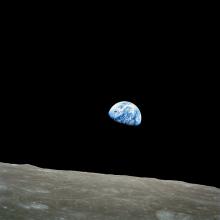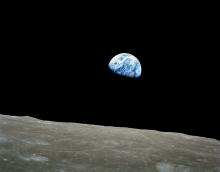Listen to today's episode of StarDate on the web the same day it airs in high-quality streaming audio without any extra ads or announcements. Choose a $8 one-month pass, or listen every day for a year for just $30.
You are here
Far from the Sun
We think of orbits as circles. But that’s not the case. The orbits of the planets and moons are all ellipses, which look like circles that have been squished a bit. So the distance between a planet or moon and the body it orbits changes. The Moon’s distance from Earth, for example, varies by about 30,000 miles.
And Earth’s distance from the Sun changes, too. In fact, today we’re farthest from the Sun for the entire year — a bit more than a million and half miles farther than the average distance.
Because of that extra gap, Earth receives about six percent less solar energy at this time of year than when we’re closest to the Sun, in early January. But Earth’s atmosphere and oceans do a good job of distributing the Sun’s heat around the globe, which keeps the northern and southern hemispheres relatively balanced.
There’s one other effect of Earth’s elliptical orbit. Our planet moves fastest when we’re close to the Sun, but slowest when we’re far from the Sun, as we are now. As a result, summer is the longest season here in the northern hemisphere — it lasts about five days longer than winter.
Of course, the situation is reversed in the southern hemisphere — winter is the longest season, while summer is the shortest.
After today, Earth will start moving closer to the Sun, at an average of more than 15,000 miles per day — carried inward by our planet’s elliptical orbit.
Tomorrow: a pathfinding rover arrives at the Red Planet.
Script by Damond Benningfield





